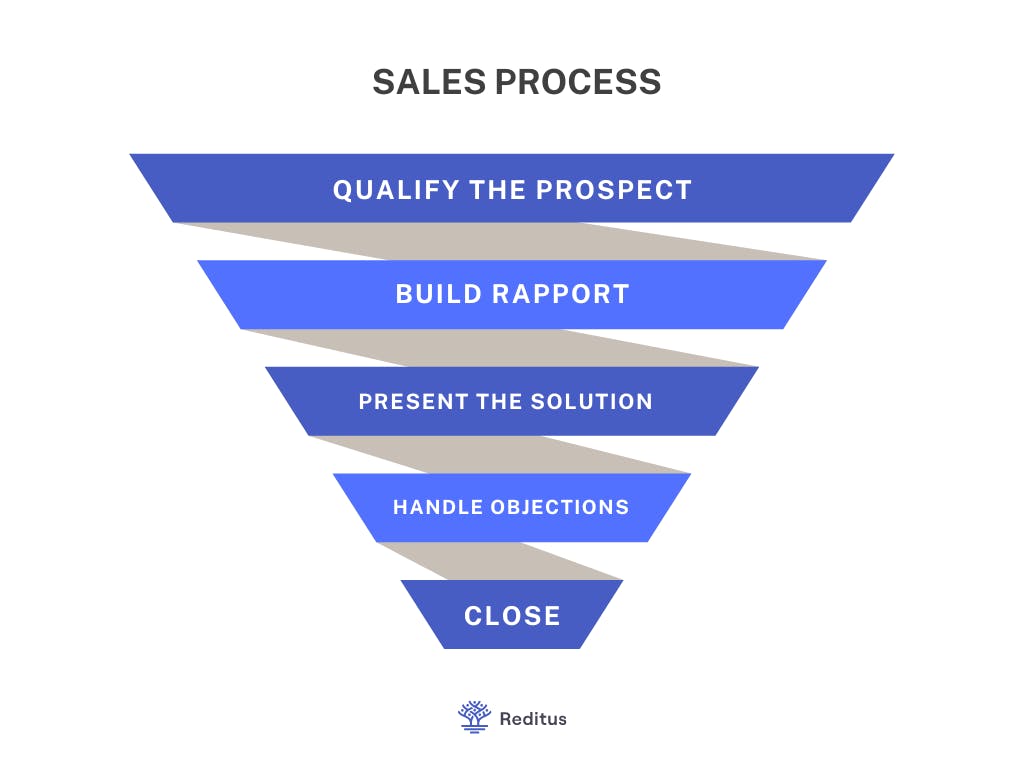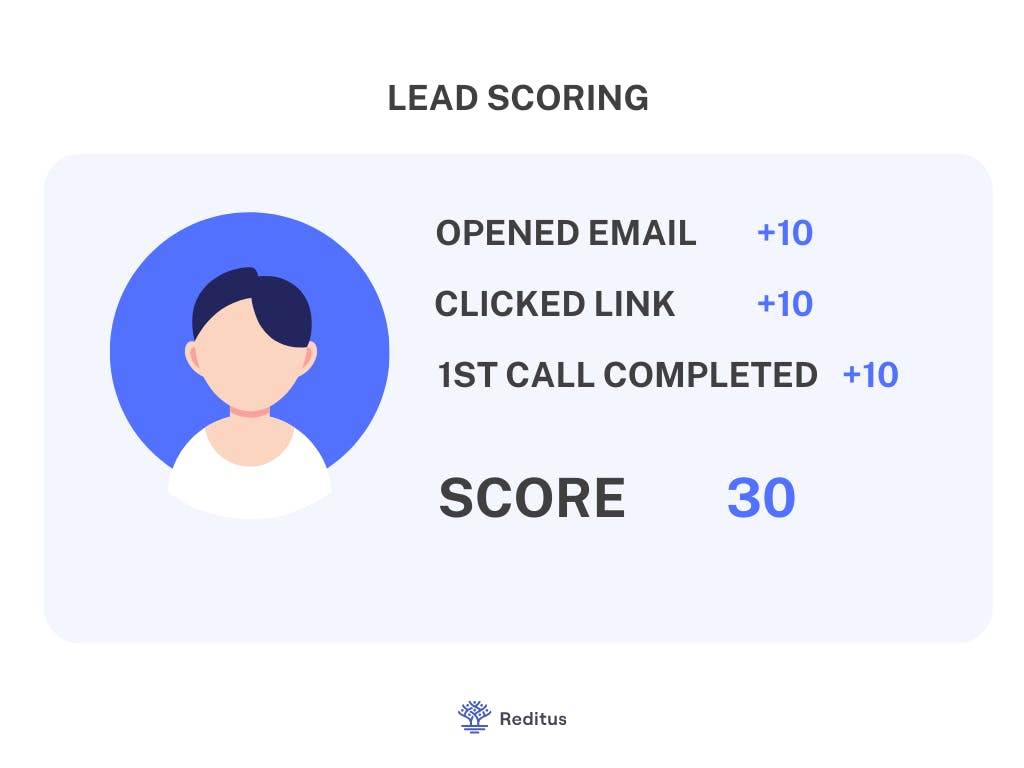How to Create a Sales Pipeline For Your SaaS: A Complete Guide

What does a SaaS business take to create a successful sales pipeline?
Many CEOs would agree that it's essential to have a well-defined process in place, from lead generation to closing deals. But what exactly does that entail?
In this article, we'll walk you through everything you need to know about sales pipelines, including what they are, why you need one, and best practices for creating your own.
Let's answer a simple yet fundamental question.
Table of contents
What Is a Sales Pipeline?
A sales pipeline is a set of defined steps that sales reps take to move prospects from initial contact to a closed deal.
The idea is that by having a clear process in place, you can more easily measure and forecast your sales.
Pipelines vary from business to business, but they typically include stages like:
- Lead generation: This is the process of generating leads, or potential customers, through various marketing activities.
- Lead nurturing: Once you have generated a lead, it's important to build a relationship and maintain communication. This is often done through email marketing or sales calls.
- Qualification: The next step is to qualify the lead. This involves determining whether or not the lead is a good fit for your product or service.
- Proposal: If the lead is qualified, you'll then create a proposal outlining your solution and pricing.
- Negotiation: The next stage is negotiating with the prospect and trying to reach an agreement.
- Closing: The final stage is closing the deal and getting the prospect to sign on the dotted line.
Of course, this is just a basic overview.
Your sales pipeline will likely be more complex and include additional stages.
For example, you may have a stage for customer onboarding or post-sale follow-up. Or, if you're selling to larger organizations, you may have a dedicated team for each stage of the sales process.
The important thing is that you define the steps involved in your sales pipeline and establish clear criteria for moving prospects from one stage to the next.
Why Do You Need a Sales Pipeline For Your SaaS Business?
Developing a sales pipeline can be quite complex. So, why should you bother?
Here are a few key reasons:
- A sales pipeline helps you track progress and measure results. Without a sales pipeline, it can be difficult to track your sales team's progress or measure the success of your marketing campaigns. By defining each stage of the process and tracking metrics like conversion rate, you can get a clear picture of what's working and where there's room for improvement.
- A sales pipeline enables you to forecast future sales. If you know how many leads you need at each stage of the pipeline and your conversion rate for each stage, you can forecast your future sales with a high degree of accuracy. This is extremely useful for planning purposes and can help you make informed decisions about things like budgeting and hiring.
- A sales pipeline ensures you don't forget about any leads. It's easy for sales reps to get caught up in the day-to-day and forget about leads that are further down the pipeline. However, with a sales pipeline in place, you can ensure that each lead is followed up on in a timely manner and that no opportunities are missed.
A sales pipeline can help you close deals faster. By having a defined process in place, you can avoid bottlenecks and close deals faster.
Best Practices for Creating a SaaS Sales Pipeline
Now that we've covered the basics of sales pipelines, let's take a look at some best practices for creating your own.
1. Keep It Simple
When creating your sales pipeline, it's important to keep things simple.
Don't try to include too many stages or make the process too complex. The goal is to create a process that is easy to follow and understand.
Many sales pipelines only include four or five stages, so start with something basic and then add additional stages as needed.
For instance, your sales pipeline might include the following stages:
- Prospecting
- Qualification
- Meeting
- Proposal/Presentation
- Closing
You can always add more stages later on if you find that you need them.
2. Make Sure Each Stage is Clearly Defined
You should clearly define each stage of the pipeline.
This will help you to know when a lead is ready to move to the next stage and will make it easier to track your progress.
When defining each stage, you should include the criteria that a lead must meet in order to move on to the next stage.

For example, in the "prospecting" stage, you might require that a lead has been contacted and is interested in learning more about your product.
In the "qualification" stage, you might require that a lead has been vetted and is a good fit for your product.
By clearly defining each stage, you can ensure that your sales team is working efficiently and that leads are moving through the pipeline in a timely manner.
3. Establish Clear Criteria for Moving Prospects From One Stage to the Next
If you want your sales pipeline to be effective, you need to establish clear criteria for moving prospects from one stage to the next.
Otherwise, you'll likely find yourself with a lot of prospects who are "stuck" in one stage or another, which can lead to frustration on both your part and the part of your sales team.
When setting criteria for moving prospects through your pipeline, there are a few things to keep in mind:
- Each stage should have its own specific criteria. As we mentioned above, the criteria for moving a prospect from the "prospecting" stage to the "qualification" stage will be different from the criteria for moving a prospect from the "meeting" stage to the "proposal/presentation" stage.
- The criteria should be realistic and achievable. If the criteria for moving a prospect from one stage to the next are too stringent, you'll find that prospects get stuck in one stage and never make it to the next.
On the other hand, if the criteria are too lax, you'll likely end up with a lot of unqualified prospects moving through your pipeline.
For example, let's say you're selling a high-end product with a long sales cycle. In this case, it might not be realistic to expect prospects to move from the "prospecting" stage to the "closing" stage within a week.
However, you might realistically expect prospects to move from the "prospecting" stage to the "meeting" stage within that time frame.
Third, the criteria should be clearly defined and communicated to your sales team. This will ensure that everyone is on the same page and knows what is expected of them.
4. Use Lead Scoring to Prioritize Prospects
Lead scoring is a system for ranking your prospects based on their likelihood of converting into paying customers.
This can be a helpful tool for prioritizing prospects as they move through your sales pipeline.

For example, let's say you have two prospects in the "meeting" stage of your pipeline.
Prospect A has a lead score of 80, which means they are considered to be high-quality leads.
Prospect B has a lead score of 20, meaning they are considered low-quality leads.
Given this information, it makes sense to prioritize Prospect A over Prospect B.
Lead scoring can be a complex topic, but there are a few key things to keep in mind:
- Lead scoring should be based on data, not assumptions.
- Your lead scoring criteria should be clearly defined and communicated to your sales team.
- Lead scoring is not a static system; it should be reviewed and updated on a regular basis.
And above all, remember that lead scoring is just one tool to help you prioritize prospects; it's not a perfect system, and there will always be exceptions.
Sometimes, a prospect with a low lead score will be a better fit for your product than a prospect with a high lead score.
For instance, a prospect who just started their research might have a low lead score because they don't yet fit your ideal customer profile.
However, they might be a perfect fit for your product and be more likely to convert than a prospect with a high lead score which is further along in their research but is a poor fit for your product.
5. Use a CRM to Manage Your Pipeline
A customer relationship management (CRM) system is a software application that helps sales teams manage their customer relationships.
CRMs are extremely helpful for managing sales pipelines because they provide a central place for storing prospect information and tracking the progress of each sale.
CRMs also offer a variety of features that can be helpful for managing sales pipelines, such as the ability to:
- Segment prospects by stage in the pipeline
- Set reminders for follow-up activities
- Generate reports on pipeline activity
There are a variety of CRMs available on the market, so it's important to choose one that's a good fit for your business.
6. Keep Your Pipeline Full
A sales pipeline is only as effective as the number of prospects in it.
If your pipeline is running low on prospects, it's time to take action to refill it.
There are a few things you can do to keep your pipeline full:
- Increase your marketing efforts: If you're not generating enough leads, consider increasing your marketing budget or changing your marketing strategy (like using Reditus to create a new revenue channel for your business).
- Prioritize quality over quantity: It's better to have a smaller number of high-quality leads than a large number of low-quality leads.
- Set a minimum number of leads: Determine how many leads you need to keep your pipeline full, and make sure you're generating at least that many leads on a regular basis.
- Nurture your pipeline: Regularly review your pipeline and take action to move prospects forward.
7. Review Your Pipeline Regularly
A sales pipeline is a living document that should be reviewed and updated on a regular basis.
At a minimum, you should review your pipeline once per month to ensure that it accurately reflects your current sales process and that all the data is up-to-date.
When reviewing your pipeline, keep an eye out for any prospects who have been stuck in the same stage for a long time or who seem to be going backward.
If you find any prospects who fit this description, reach out to them to find out what's going on and see if there's anything you can do to move the sale forward.
Conclusion
A sales pipeline is an essential tool for any business that sells products or services.
It provides a roadmap for sales activities and ensures that prospects are properly managed throughout the sales process.
Creating a sales pipeline can seem daunting, but it doesn't have to be.
By following the steps outlined in this article, you can create a sales pipeline that will help your business close more deals and grow your revenue.

